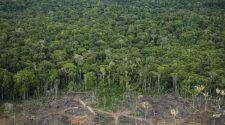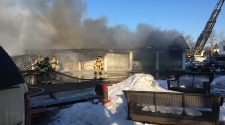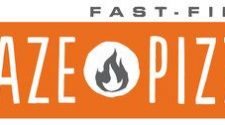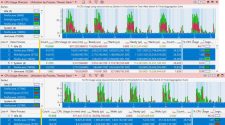Before Joan Ruskamp became a Nebraska cattle feeder, she was first a consumer with little knowledge of the feeding business.
“I didn’t understand a lot of the ‘why behind the what’ that was going on, and living as a farmer for 37 years, as a cattle feeder, I have had my eyes opened and so I understand why consumers don’t know, when they haven’t been exposed to it and they haven’t lived it,” Ruskamp says.
One of the biggest misperceptions, she says, is that farmers and ranchers have something to hide.
“We invite people to come onto our farms, and when they can say ‘you act like you have nothing to hide,’ that says a lot to me that they do trust me when they see what I’m doing,” she says. “I don’t have anything to hide. We are keeping records. We are being good stewards. We’re seeking to be as responsible as possible. We’re counting on good research, good solid research, to help us be better stewards, be better advocates of what we are doing.”
The family-run business maintains a commitment to keeping cattle calm, comfortable and thriving through low-stress handling, proper nutrition – and, when needed, the responsible use of antibiotics.
“We’re all committed to doing the best we can. Our farm is an investment, not only of our economical value of the finances we have, but our reputation and what we believe as people, and taking care of land, taking care of animals and then feeding people – feeding our elderly parents, feeding our little grandchildren,” Ruskamp says.
Five hundred miles to the south, feeder and veterinarian Carter King also makes a living ensuring cattle stay healthy. He oversees millions of head in the Texas panhandle and trains workers to distinguish sick cattle from healthy ones.
“Antibiotics, just as they’re required in humans, they’re also going to be required in anything with a beating heart that has the ability to contract an infectious disease. And it’s our job. It’s our oath that we took as veterinarians to care for those animals because they can’t care for themselves in that situation,” says King.
“We don’t want these animals to get sick. We do everything in our power, whether it be welfare-wise, cattle movement-wise, cattle handling-wise, to decrease the incidence of those cattle that do get sick,” he says. “The antimicrobials that are administered today are for prevention, treatment and control of disease.”
These feeders aren’t alone. The most recent FDA figures show substantial drops in medically important antibiotics sales and distribution in all U.S. food animal production. For Ruskamp, the facts leave nothing to hide.
“I would like to invite the consumer to come with a farmer, rancher, like me, and walk a mile in my shoes,” she says. “See what I see, and walk away with a greater understanding at least.”
Learn more about responsible antibiotics use during the National Institute for Animal Agriculture’s 9th Annual Antibiotic Symposium, Oct. 15-17, at Iowa State University. Watch animalagriculture.org for further details.
About One Health:
The One Health series is brought to you by the National Institute for Animal Agriculture (NIAA) with leadership and technical support from Merck Animal Health. NIAA and Merck Animal Health are committed to understanding and finding solutions to antimicrobial resistance from animal health, human health and environmental perspectives. The One Health initiative is a collaborative effort between leaders in each of these areas and includes outreach to inform both consumers and producers. The goal: Responsible antibiotics use.
About NIAA:
The National Institute for Animal Agriculture (NIAA) was established to derive solutions on the most current issues in animal agriculture. Its members include producers, veterinarians, scientists, and government and allied industry representatives. NIAA is dedicated to programs that work toward the eradication of diseases that pose a risk to the health of animals, wildlife and humans. It also promotes a safe and wholesome food supply and best practices for animal health and well-being as well as environmental stewardship. More information is available at animalagriculture.org.
Related stories:
I’m A Drover: Telling Beef’s Story

















